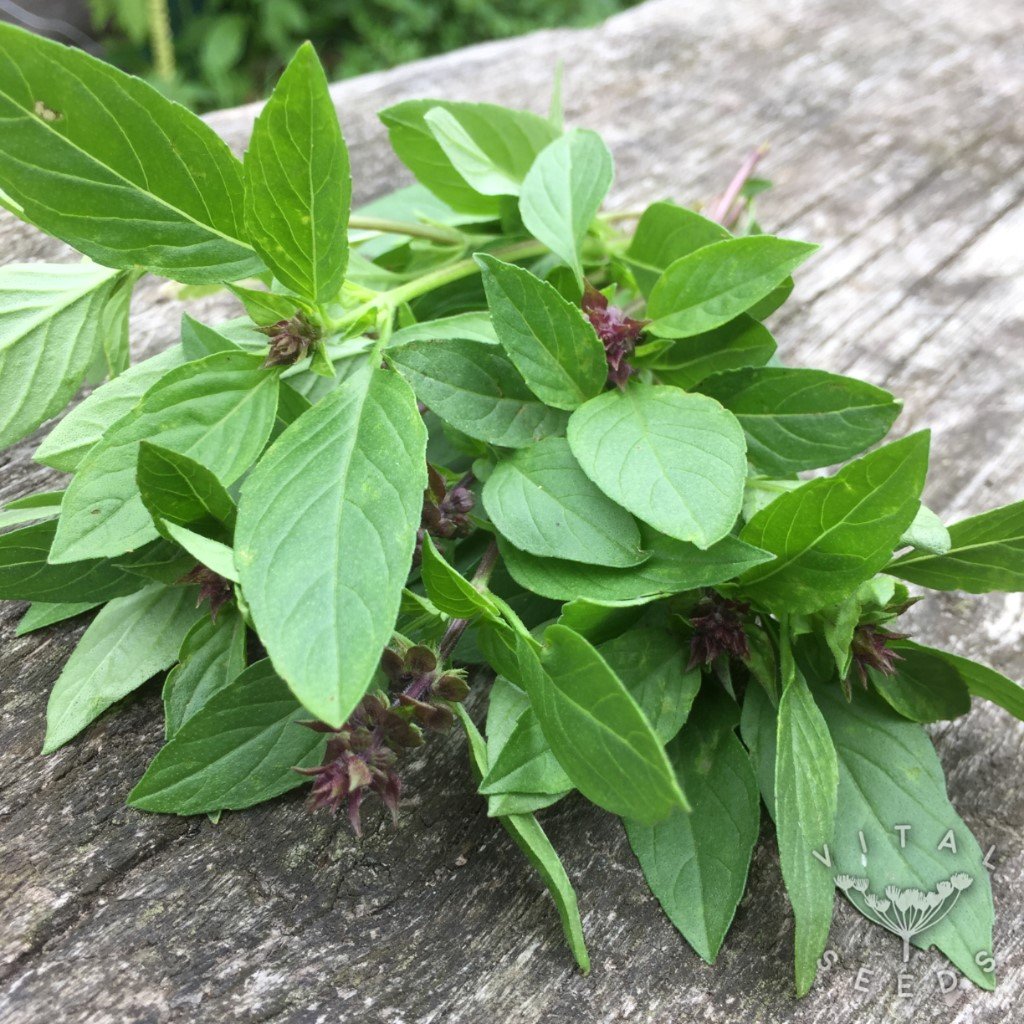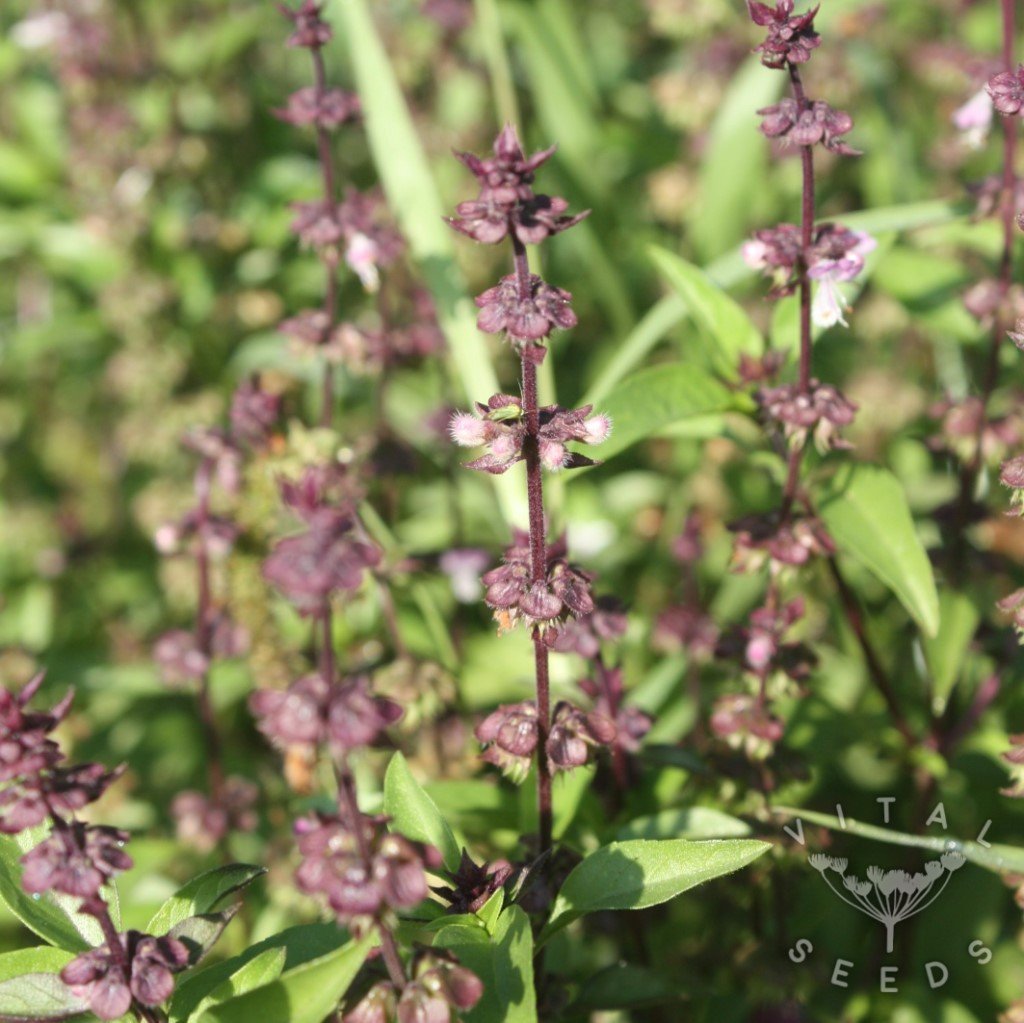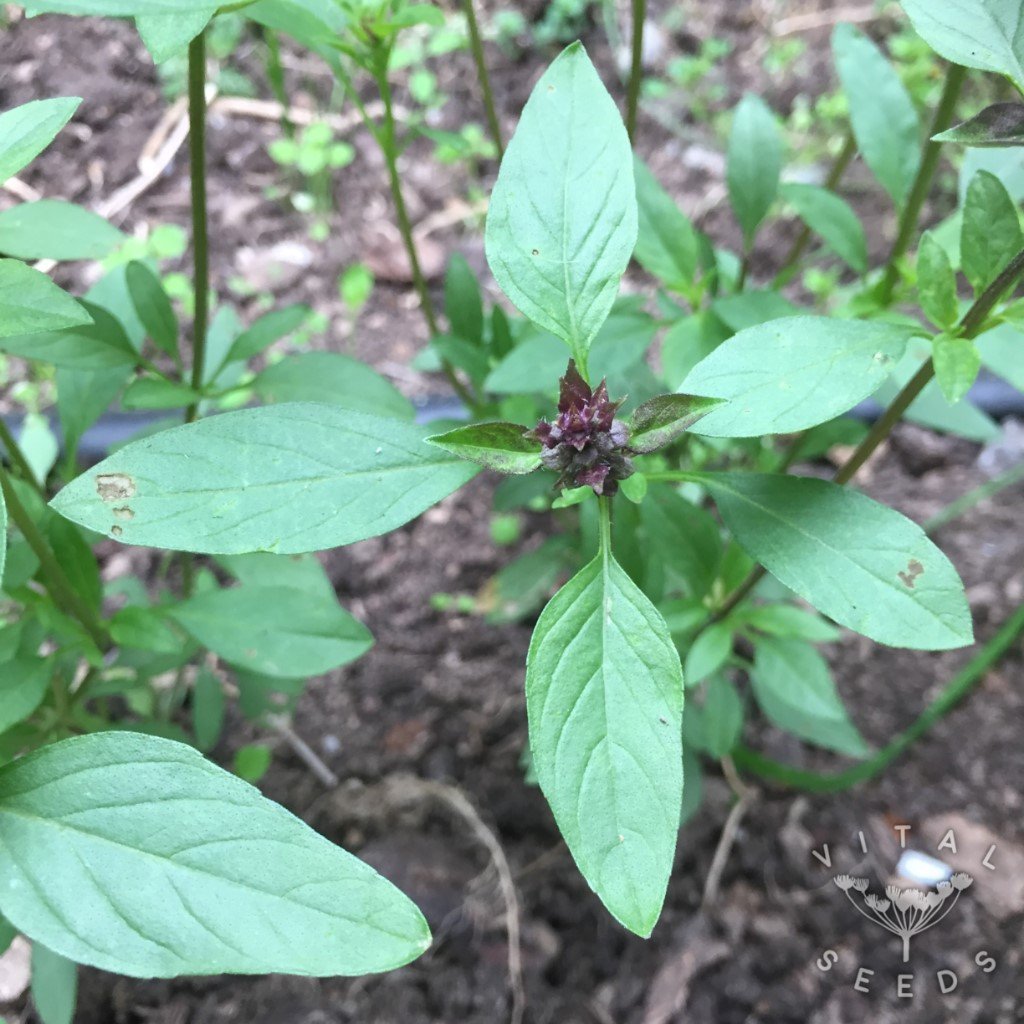Basil – Thai (Organic)
£2.00
Irreplaceable, anise-flavoured variety used in Asian cooking on a compact plant that is equally as ornamental as it is culinary . Striking both in flavour and appearance, Thai basil has a more concentrated, spicy flavour than its more well known cousin with notes of anise and liquorice. It has smaller, narrow, pointed leaves with flowers and stems of a deep purple. It’s perfect for Thai green and red curries and stir fries and is resilient to longer cooking methods.
(Approximate seed count – 350)

Coming / back soon!



